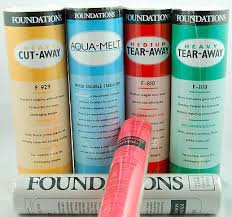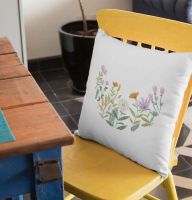The Ultimate Guide to Embroidery Stabilizers: Get Professional Results Every Time
Embroidery is a beautiful art form that can elevate any project, but if you're not using the right stabilizer, your hard work can end up looking like a mess. As any experienced embroiderer knows, the key to achieving perfect results is choosing the right stabilizer. In this guide, we'll answer all of your questions about stabilizers, including what types to use and when to use them, so you can get professional-looking results every time.
What Brand of Stabilizer Should You Use?
When it comes to choosing a brand of stabilizer, we recommend ordering from a reliable online embroidery source or supporting your local dealer and using the brand they sell. While most stabilizers are created by a handful of main manufacturers and then sold under different brands, it's best to avoid purchasing from big-box stores like Walmart or Michaels. These stores may offer lower prices, but the quality of the stabilizer is often poor, and you may end up with inconsistent stitching.

Why Is Stabilizer So Important?
Stabilizer is the foundation of your embroidery, and it's necessary to support your fabric and thread. Without proper stabilizer, your design may end up with puckering, distortion, or misregistration. In the past, home embroiderers used creative alternatives like coffee filters or saran wrap, but these substitutes often led to poor results. Proper stabilization is crucial for achieving high-quality embroidery, and it's something you should never skimp on.
The Main Types of Embroidery Stabilizers and When to Use Them
There are three main types of embroidery stabilizers: tear away, wash away, and cut away. Each type is available in different weights and may also be fusible or tacky. Here's a quick guide to choosing the right stabilizer for your project:
Tear Away: Use this type of stabilizer for stable, woven fabrics that don't stretch, like towels or leather. Choose a heavier stabilizer for thicker fabrics and higher stitch count designs, and a lighter stabilizer for lightweight fabrics and lower stitch counts.
Wash Away: Use this type of stabilizer for sheer fabrics like organza or freestanding lace designs. After embroidering, trim away the excess stabilizer and rinse the design in warm water. Some water types are harder than others, so you may need to add a bit of hair conditioner or fabric softener to aid in removing the stabilizer.
Cut Away: This is the most stable type of stabilizer and is permanent. Use it for any project that will be worn and washed regularly. Choose a heavier stabilizer for heavier designs but never use more than three layers of product under your fabric.
In addition to the three main types of stabilizers, many brands offer specialty products to help stabilize fabrics that may unravel, distort, or pucker. These products can add varying textures and shapes, but they do not replace stabilizer and should be used in conjunction with tear away or cut away stabilizers.
The Importance of Embroidery Toppings
Toppings are essential for placing a barrier between your stitches and the fabric, so your stitches don't disappear. Water-soluble and heat-away toppings are both available, and you shouldn't hoop your topping, but you do need to secure it. Cut a piece slightly larger than your embroidery design and secure it with water, pins, or tape. Always use a topping on everything you embroider to ensure your finished product is supported, and the nap of the fabric doesn't work its way through the embroidery design.
Guide Conclusion: Use All 3 Types of Embroidery Stabilizers for Perfect Results
Embroidery stabilizers come in different sizes, colors, and are used for different fabrics
Comments
Last photos
All photos in Gallery




